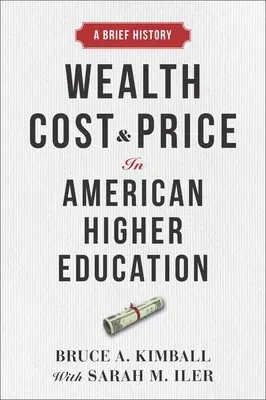Colleges and universities are richer than ever--so why has the price
of attending them risen so much?
As endowments and fundraising campaigns have skyrocketed in recent
decades, critics have attacked higher education for steeply increasing
its production cost and price and the snowballing debt of students. In
Wealth, Cost, and Price in American Higher Education, Bruce A. Kimball
and Sarah M. Iler reveal how these trends began 150 years ago and why
they have intensified in recent decades.
In the late nineteenth century, American colleges and universities began
fiercely competing to expand their revenue, wealth, and production cost
in order to increase their quality and prestige and serve the soaring
number of students. From that era through today, the rising wealth and
cost of higher education have continued to reinforce each other and
spiral upward, increasing the heavily subsidized price paid by students.
Kimball and Iler explain the strategy and reasoning that drove this
wealth-cost double helix, the new tactics in fundraising and endowment
investing that fueled it, and economists' efforts to understand it.
Using extensive archival, documentary, and quantitative research,
Kimball and Iler trace the shifting public perception of higher
education and its correlation with rising costs, stagnating wages, and
explosive student debt. They show how stratification of wealth in higher
education became tightly interwoven with wealth inequality in American
society. This relationship raises fundamental questions about equity in
US higher education and its contribution to social mobility and
democracy.

